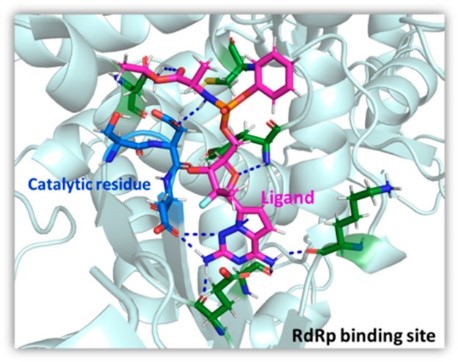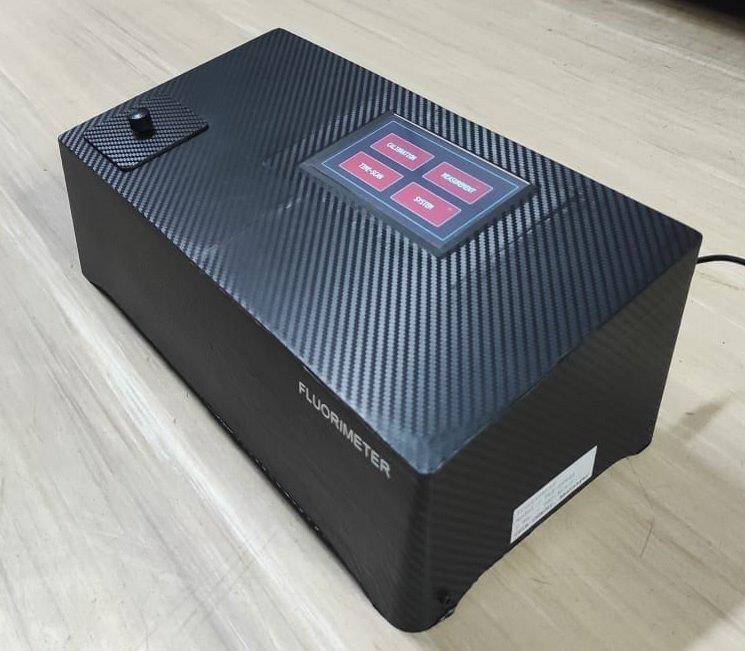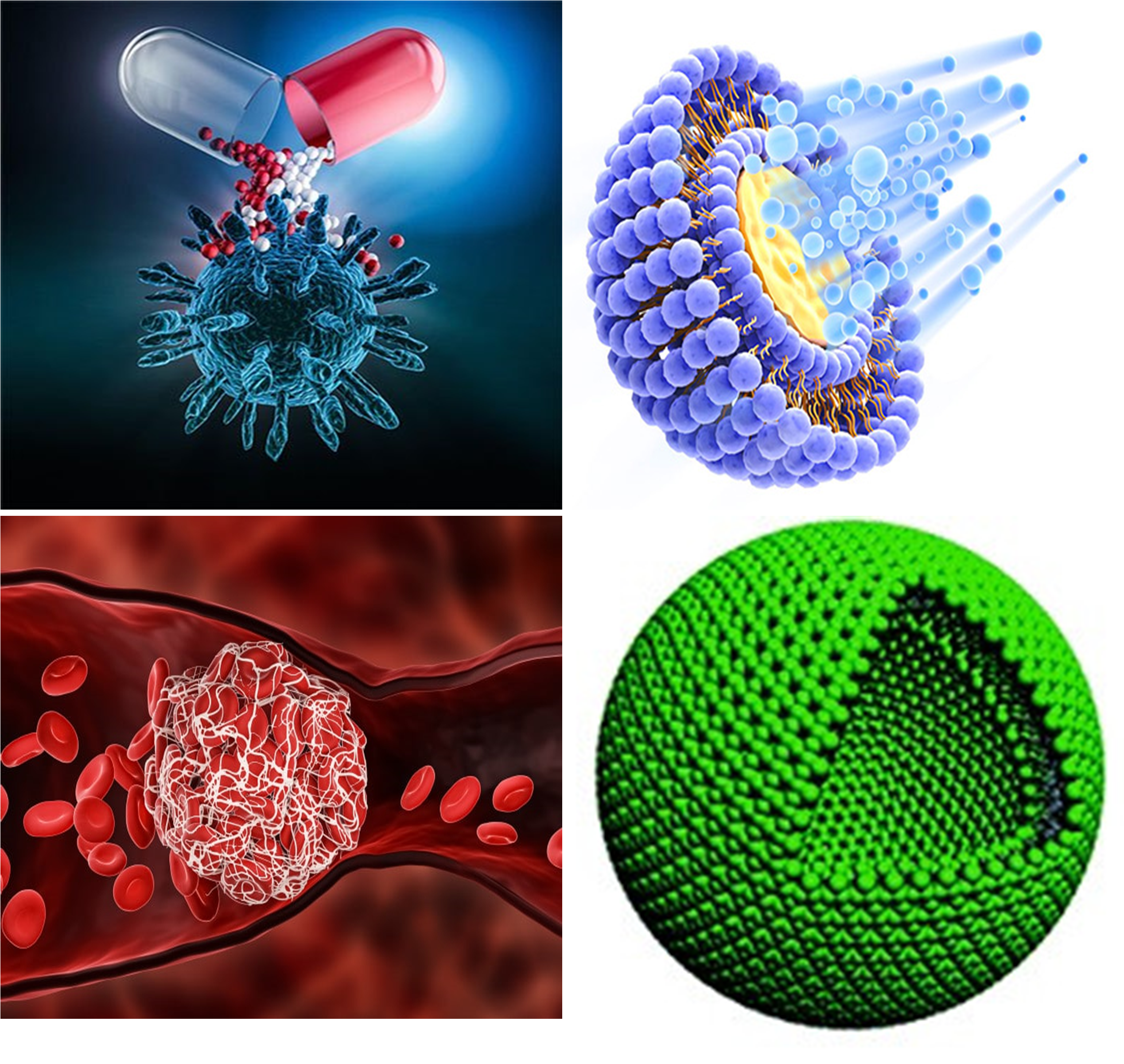The Analytical and Environmental Science Division and Centralized Instrument Facility
The Analytical and Environmental Science Division and Centralized Instrument Facility (AESD & CIF) is a centralized analytical infrastructure of CSIR-CSMCRI combine with the environment related activities to cater multifaceted characterization and quantitative analysis through advanced analytical instruments as well as environmental solution by dedicated skilled human resources. AESD & CIF is also involved in the process of scientific knowledge generation in the R&D area of Crystal Engineering, Computational Study, Drug Delivery, Electroanalysis and Electrocatalysis, Environmental Science, Optical Sensors, Supramolecular Chemistry, instrumentation and analytical method developments.
Average annual number of publication
70Average impact factor
4.06Theoretical/Computational chemistry
In this field, our research interests comprise the applications to Organic-, Inorganic-, Physico- or Biochemical problems. The developed molecular modelling techniques are applicable to a variety of research problems in the field of crystal morphology, sensors, mechanistic studies in biological/ inorganic reactions, and enzyme modelling with small molecules, including drugs. A range of national and international collaborations with experimental and other theoretical groups have been established.

Sensor development
Developing organic receptors, coordination compounds, chiral molecules, nanoparticles, mesoporous materials with diverse binding pockets and signalling motifs is among the basic R&D activities of the department. These receptors are used for the development of cost-effective electrochemical as well as optical sensors to be used as point-of-care diagnostic kits for various disease-linked biomarkers. Tailoring of the electrode platforms for apt attachment of the receptors on conventional electrodes and developing innovative composite (Plastic Chip Electrode) is being done.

Instrumentation
The division is also engaged in the design and development of electronics and instrumentation for various applications. The department has expertise in various domains of instrumentation such as analytical, process control, vacuum, optical, solar, fiber optics. The significant contributions include re-engineering, design and development of various standalone, PLC and PC based systems. Cost-effective and basic models of fluorometer and potentiostat has been developed, which can be further tailored as complementary electronics for the sensors developed for various biomarkers.

Drug and drug delivery
In this domain our research is centered on the interface of polymers and therapeutics at the nano-micro or macro-scale to prevent, manage or treat diseases using drugs or drug-like compounds or their combinations. We apply innovative delivery strategies to existing small or large molecules improving the risk vs benefit ratio; realize new indications or apply the innovative delivery technologies early on in the drug discovery program to minimize the attrition rates.

Electrocatalysis
The activities among electrocatalysis includes using home-developed catalysts for HER, OER and CO2RR. Electro-synthesized, nanoparticle, core-shell nanoparticle and thin film electrocatalysts have been prepared and utilized. The tailored composite electrode platform has been used with improved Faradaic Efficiency. A lot of collaboration R&D has been undertaken on electrocatalysis.
Environmental research
Environment group of this division is actively involved in marine environmental impact assessment (MEIA) studies for past many years. This group have diversified expertise such as marine biologist, environmental engineer, environmental scientists, analytical chemists etc. The work profile includes baseline data collection, Environmental Monitoring and Impact Assessment, preparation of environmental Management Plan (EMP) etc. Scientists are also involved in many critical projects assigned by state and central pollution control boards or other statutory bodies involved in environmental protections. CSIR-CSMCRI has also been accredited by NABET, Quality Council of India as master consultant to undertake EIA studies and preparation of EMP for following four sectors such as:
- Distilleries (Category A) Sector 22
- All ship breaking yards including ship breaking units (Category A) Sector 30
- Ports, harbours, break waters and dradging (Category A) Sector 33
- Common Effluent Treatment Plants, CETPs (Category B) Sector 36
Additionally, CSIR-CSMCRI also have in-house functional area experts required to assess the environmental impacts in above-said sectors. Henceforth, EIA and EMP preparation for establishing and/ or expanding the existing industrial facilities shall be undertaken.
The group is also engaged in designing and establishing engineered systems i.e. constructed wetland, which can efficiently recycle various types of polluted water.
This group also perform R&D in the area of microbial bioremediation, coral bacterial interaction, membrane microbiology for distinct applications.
Centralized Instrument Facility
The Centralized Instrument Facility is a part of (AESD&CIF) providing facilities of sophisticated analytical instruments to researchers across the country. This helps all the scientists and researchers for pursuing their R&D activities requiring such facilities. Sophisticated Analytical Instrument Facilities housed to high-end equipment’s such as SEM, TEM, XPS, HR-MS, NMR, EPR, X-Ray Facilities, Thermal Analyser etc. which are routinely used in R&D. Any individual researcher or group of researcher from any academic/government or Industry can utilize these analytical equipment facilities and services available in CIF.
Crystal engineering:
X-ray crystallography, metal organic framework, supramolecular chemistry, crystal engineering, onion recognition.
Research Linkage:
The Division is engaged in various research and development activities with various national and international organizations.
Computational study:
Computational chemistry / molecular modeling techniques are applicable to a variety of research problems in the field of crystal morphology, sensors, mechanistic studies in biological / inorganic reactions, and enzyme modeling with small molecules, including drugs.
Research Publication
| Year | No. of publications | Avg. impact factor |
|---|---|---|
| 2019 | 43 | 4.290 |
| 2020 | 51 | 4.630 |
- Fellow of Indian Academy of Sciences, Bangalore: 1
- CRSI medal: 2
- CSIR Young Scientist Award: 1
- BOYSCAST Fellow: 3
- JSPS Fellow: 1
- CSIR-DAAD Fellow: 1
- Raman Fellow: 3
- Dr. Vikram Sarabhai medal: 1
- INSA/DFG Research Fellow: 1
- Department of Science and Technology (DST), New Delhi.
- Ministry of Environment and Forests, New Delhi.
- Research Board in Atomic Sciences (BRNS), DAE.
- Defense Redevelopment and Development Organization (DRDO), Gwalior.
- Ministry of Education Science and Sports (Mess), Zagreb, Croatia.
- Department of Biotechnology (DBT), New Delhi.












